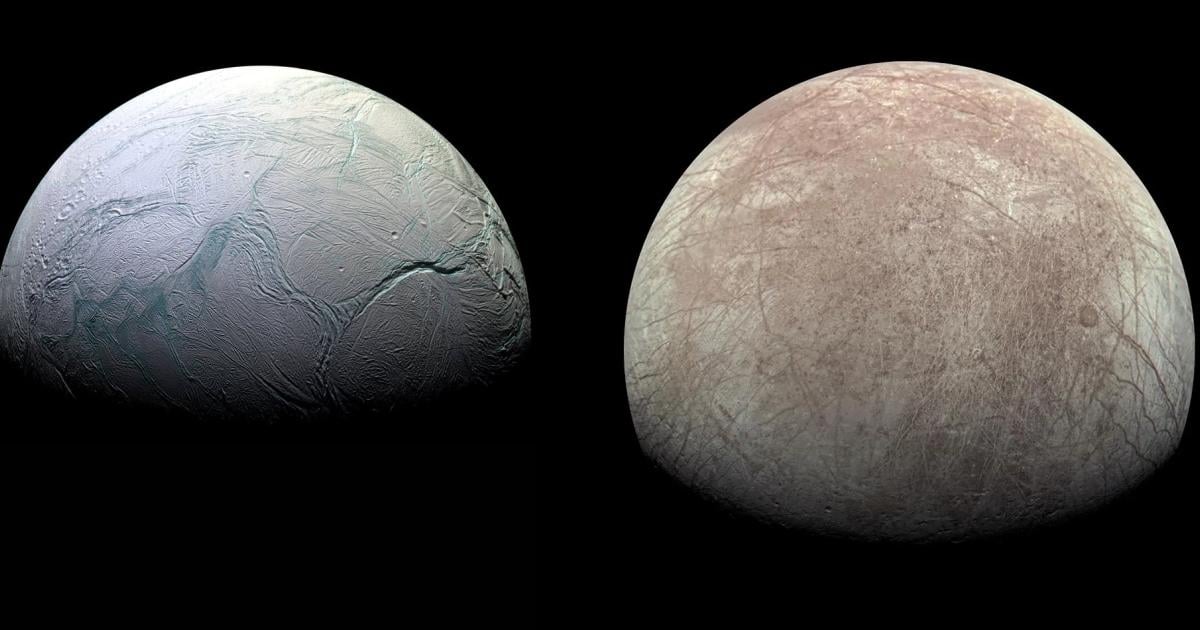There are several places in our solar system that could harbor life. 2 of them are moons. Europe And EnceladusIt is said that there are huge oceans under a thick layer of ice.
Using an experiment, NASA researchers have now discovered that evidence of life can indeed be found on the surface of moons. To organic molecules such as Amino acids You won't have to dig deep to find it.
➤ Read more: Searching for Aliens: Where in the Solar System Could Life Exist?
© NASA
In fact, nothing should remain on the surface of the two icy moons. The reason for this is that Strong radiation.It is created by high speed particles In the magnetic fields of Jupiter and Saturn as well as through events such as stellar explosions. However, oceans beneath the ice sheet are likely to be friendly to life. Tidal forceswhich operates on the oceans through its home planet, warms the water and thus can provide a habitat for it.
just under the surface
Therefore, it should already be on Jupiter's moon Europa. 20cm deep Amino acids can be found. The choice of region is crucial. Almost no meteorite impacts have been recorded at high latitudes on the far side of Jupiter. NASA researchers determined this Alexander Pavlov As the best area to search.
The search should be easier on Saturn's moon Enceladus. According to Pavlov, this is what you have to do. Don't even dig below the surface: “These molecules survive radioactive decay (radiation) at any point on Enceladus' surface.” They will. a few millimeters It lies beneath the surface.
The experiment shows how well amino acids can withstand the weather.
The researchers used amino acids in their experiment because they are the building blocks of proteins and therefore of life. You can reach both moons. Heaters It is transported to the surface.
The team mixed amino acids with -196°C Ice cold. They're closed. Vacuum flasks Filled and bombarded with gamma rays. In addition, dead bacteria were exposed to the conditions found on moons using the same method.
➤ Read more: NASA finds building blocks of life on Saturn's moon Enceladus
The Cassini spacecraft collected data from Enceladus's vapors.
© NASA/JPL-Caltech
The experiment allowed us to determine how long the amino acids remained on the surface. They developed “radioactive decay constant“, which determines the depth of the excavation at least 10 percent Amino acids may be found. Radiation concentration and age of ice surface are taken into account.
Dead bacteria and no meteorite traces
The experiment showed the presence of amino acids in Microorganisms Survival is longer. Researchers suspect that the bacteria prevent amino acids from forming new chemical compounds as a result of radiation and thus decompose.
NASA experiment bombards cold amino acids with gamma radiation
© Candice Davison
In addition, amino acids were tested. Meteorite effects They interact. To do this, they were mixed with corresponding dust particles, which would be dispersed to the surface by collisions. It turned out that biological amino acids decomposed there faster than in pure ice. Investigation results Published in the Journal of Astrobiology.
➤ Read more: The Juice Begins: Europe's Search for Life on Jupiter's Moons
2 missions on the way to Europe
That's why the NASA team recommends sending robots to areas on Enceladus and Europa that are largely protected from meteor impacts. juice And europe clipper Both ESA and NASA have currently launched probes to Jupiter's moons. They aim to provide more information. There is currently no mission to land on the Moon.

“Total coffee aficionado. Travel buff. Music ninja. Bacon nerd. Beeraholic.”








More Stories
Coral Seeding: Artificial Insemination Makes Coral More Heat Tolerant
Fear, Anger, and Denial: How People Respond to Climate Change – Research
LKH Graz: Using radiation to combat heart arrhythmias